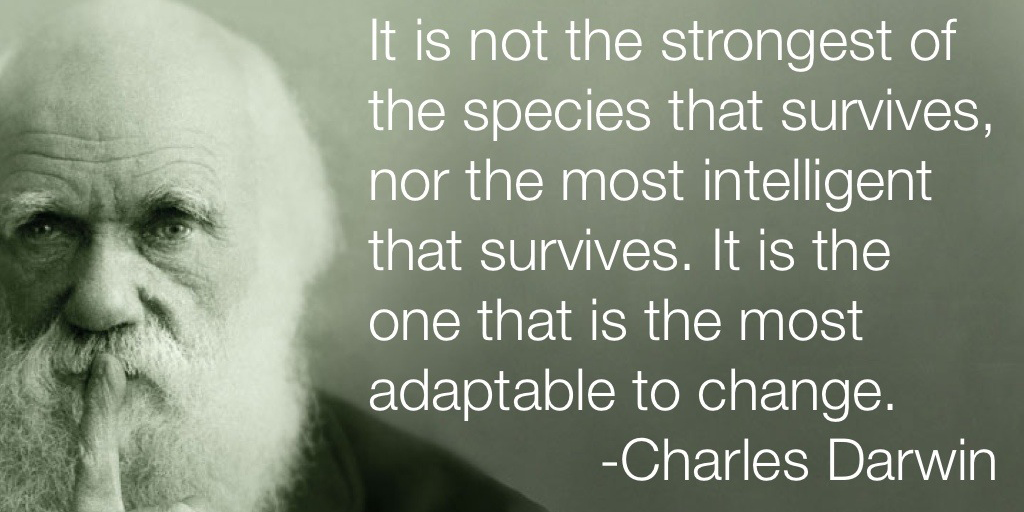A brief guide to the Coronavirus Job Retention Scheme, what it means for the events industry and event staff, and who is eligible for furlough.
Adapt to Survive
He may be the most misquoted man in history but what Darwin has to say about survival is extremely relevant in today’s corona-economy.
“It is not the strongest of the species that survives, nor the most intelligent that survives. It is the one that is most adaptable to change” Charles Darwin 1809
As we learn to adapt through these times, the government are providing certain measures to ease the pressure on businesses and their owners. There are various grants and loans available, although highly nuanced, we do suggest speaking to your accountant or finance team for advice.

Furlough for the UK Events Industry
On Friday 20 March, the Chancellor Rishi Sunak announced the new Coronavirus Job Retention Scheme.
The scheme aims to help UK employers access a grant to continue paying part of their employees’ salaries, preventing redundancies or unemployment caused by the coronavirus crisis. This scheme does not apply to the self-employed who are being helped under a different scheme.
On Thursday 26 March, the government a published detailed guidance for employers on how the scheme will operate. Here are the basics:
What is the Coronavirus Job Retention Scheme (JRS)?
The new JRS is a series of grants from HMRC to cover 80 per cent of the wages of staff who are on the payroll but not working because of the outbreak. The maximum amount eligible is £2,500 per worker per month.
Using the word ‘grant’ instead of ‘loan’ means you don’t have to repay the money.
Employers can top up an employee’s salary above the 80% / £2,500 cap, but the JRS does not require them to do so.
Employers must ask employees to stop working while keeping them on their payroll. The scheme describes these individuals as “furloughed workers.”
The scheme will be up and running by the end of April 2020. ***Update – the furlough scheme went live on 20th April.
Who can access the scheme?
All UK employers who operate by PAYE can access the scheme. Employers will need to have created and started a PAYE payroll scheme on 28 February 2020. ***Update, the date for furlough eligibility has changed to 19th March 2020. Employees must have been on PAYE payroll on or before this new date.
The scheme is open to ANY size business or sector who pay their employees via PAYE. You don’t need to classify your business as “essential” to access the grants, and you don’t need to prove financial hardship either

Which Event Staff can be furloughed?
JRS will support any individual paid through the PAYE system, regardless of their employment contract.
The scheme covers workers paid through PAYE, including those on part-time, zero-hour, or other flexible contracts. It also includes workers with more than one job or who work for multiple companies. Each employer and job is treated separately, so the cap applies individually to each employer. This is great news for event crew and flexible workers in the gig economy, as long as employers hired them on or before 28 February 2020. Employers can only furlough workers if they have stopped working. Update: the date has now changed to 19th March 2020. Those employed as of 28th February on PAYE payroll but who ceased working for that employer before 19th March 2020 can be reemployed and then furloughed.
Although the guidance doesn’t specify this, it implies that employers can furlough employees in one job while allowing them to continue working in another. Again, this could benefit event staff, crew and flexible workers.
Reversing Redundancies
The JRS also covers employees made redundant since 28 February 2020, if their employer rehires them. If your business had to make redundancies it is possible to re-employ staff made redundant after 28 February, and place them on furlough in order to benefit from the JRS.
Tax, National Insurance and Pensions
The grant will cover the associated Employer National Insurance Contributions and minimum automatic enrolment employer pension contributions payable on the subsidised wages paid to furloughed employees. They will issue further guidance on how to calculate this.
Individuals will pay income tax and National Insurance Contributions as usual on any payments received as part of the JRS (via PAYE deductions made by their employer). Employees will also pay automatic enrolment contributions on qualifying earnings, unless they have opted out.
How are 80% of wages being calculated?
For employees who receive a regular salary, employers calculate 80% based on the employee’s actual salary before tax (i.e., their gross salary) as of 28 February. This date has now changed to 19th March 2020.
Most event staff, crew, hospitality staff, performers etc will be on shorter, flexible contracts. For employees with variable pay, such as those on zero-hour or flexible contracts, employers will apply the 80% limit to the higher of the following:
– the same month’s earnings from the previous year; or
– the average monthly earnings from the 2019-20 tax year; or
– If employees have worked for less than a year, employers calculate their pay using the average of their monthly earnings since they started (or pro-rata earnings if they began in February).
The government also states that employers can pay furloughed employees the lower of 80% of their salary or £2,500, even if this amount falls below the National Minimum Wage.
How long will JRS operate for?
So far the Chancellor has said the temporary scheme which will run for at least three months from 1 March 2020 until the end of May. People say he will extend the scheme for longer if necessary.
How to Furlough Event Staff
The government confirms that employers must discuss any decision with staff and make any changes “by agreement.”
The guidance requires employers to engage in collective consultation processes when many staff are involved to secure agreement on changes to terms of employment.
To qualify for the subsidy, employers must write to their employees, confirm the furlough, and keep a record of the letter.
Without written evidence of this communication, employers risk not being able to claim under the JRS.
***Additional information from 20th April 2020. Taken from guidance from Mayer Brown:
- Further guidance has been provided on the information to be provided by employers if they wish to make a claim for the grant. If employers furlough fewer than 100 staff, HMRC will ask them to enter details of each employee directly into the system, including information such as name, national insurance number, claim period, and claim amount. If employers furlough more than 100 staff, they will need to provide this information in a file rather than inputting it directly into the system.
- The Guidance Note requests employers to keep employees fully up-to-date on the claims being made on their behalf. HMRC is not providing employees with details of claims made on their behalf. This primarily concerns employers who furloughed people, understanding that they would only pay them once the furlough grant money arrived from the government. Otherwise, the employer is still responsible for making salary payments during the furlough period, regardless of whether they have the necessary funds at that time.
Is there a minimum furlough period?
The government states that employees must be furloughed for a minimum of three weeks.

Does JRS apply to people on sick leave or self-isolation?
In short, no. Employers must pay statutory sick pay to anyone who is off sick or self-isolating according to government guidance, or enhanced sick pay if their contractual terms provide for it. Government guidance is that anyone who lives in the same household as someone with symptoms of coronavirus must remain at home for 14 days. This means that it is not possible to use the JRS to “top up” statutory sick pay, or to claim support when paying enhanced sick pay.
However, once someone is no longer off sick or required to self-isolate, the employer can furlough them.
What if your staff are self-employed?
As mentioned above, the self-employed are being covered under a separate scheme. Similar to furlough this scheme will allow self-employed staff to claim a taxable grant worth 80% of their trading profits up to a maximum of £2,500 per month for the next 3 months. They may extend this if needed.
You can apply if you’re a self-employed individual or a member of a partnership and you:
- have submitted your Income Tax Self Assessment tax return for the tax year 2018-19
- traded in the tax year 2019-20
- are trading when you apply, or would be except for COVID-19
- intend to continue to trade in the tax year 2020-21
- have lost trading/partnership trading profits due to COVID-19
Self-employed trading profits must also be less than £50,000 and more than half of income generated from self-employment.
Most importantly, you cannot apply for this scheme yet. HMRC will contact you if you are eligible for the scheme and invite you to apply online. HMRC specifically told people not to contact them about this.
Updated information for SEISS (Self-employed scheme)
- HMRC will contact those eligible for the scheme by mid-May 2020.
- Individuals do not need to repay the SIS Grant at a later date (assuming they applied for it validly), and receiving the grant does not stop them from taking on other work or employment during the period of receipt.
- Businesses must confirm to HMRC that the coronavirus pandemic has adversely affected them. HMRC hasn’t clearly defined this, and in some cases, individuals may not show a decline in profits but can argue that their profits would have been higher if not for the pandemic.
- Individuals who have not submitted a self-assessment tax return for 2018-19 must have submitted this by 23 April 2020 or they will simply be completely ineligible for coverage. There is no mention of any leeway in the Guidance Note so this is being presented as a hard stop date.
In a Nutshell
In summary the key points for event staff are:
- Employers can furlough part-time, zero-hour, and flexible contract event staff.
Employers can pay furloughed employees the lower of 80% of their salary or £2,500.
They calculate the amount based on the employee’s actual salary as of 28 February 2020, or - If on a flexible contract, amount will be based on average monthly earnings from 2019-20 tax year
- Self-employed are not eligible under this scheme

Clear as Mud?
It’s a tough time, and we are all having to learn new ways of working and getting to grips with these government schemes. Liveforce is no different. The coronavirus has hit the events industry hard, but it highlights how important and valued the industry is. With schemes like furlough, there will be a new way of working and a new lease on life for all businesses when this is over. With the passion, strength, intelligence, and commitment that abound in the events industry, we will adapt and survive.





